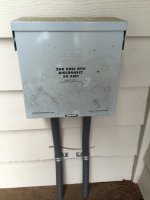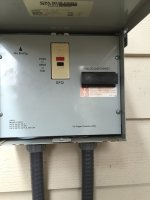BobRip
Elite Member
I believe you are required to have a disconnect in the garage. The infeed breaker is fine for that. For safety sake you do not want to be working on a panel that someone in another area could turn back on. I am pretty sure this is a code requirement .


